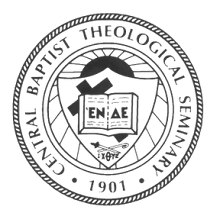As a child, New York City seemed to be “the uttermost parts
of the world.” Textbook pictures of the Empire State Building, Times Square,
Ellis Island, and the Statue of Liberty confirmed how important and busy a city
it was. Grainy documentaries (it was the
fifties, after all) showed it to be full of immigrants, business tycoons,
tickertape parades, and big ships traversing the harbor. Our teachers would then comment how safe and
secure we were in small town America, by contrast.
Cities hold
both promise and peril, perhaps in larger proportion because of the sheer
density of population. Transportation,
housing, and livelihood present significant challenges in this tightly packed
city. As one local observer noted, “only
the very poor or very rich can make it here—the poor because of subsidized
housing; the rich because they can afford the over the top prices.”
The prophet
enjoined the exiles, “seek the welfare of the city.” The displaced were to count the new location
as their own and strive to live at peace with others. They were to recognize that the divine
presence remained with them even in the exilic experience and that God was
granting a future with hope.
During my
week in this teeming city, I have had opportunity to witness the creativity of
churches as they embrace their contexts with enthusiasm. The bunkered church does not thrive here--or
anywhere, for that matter. More than
seeking to survive, the churches I have visited are finding ways to make
welcome their neighborhoods through imaginative ministries.
Judson
Memorial Church, located for 117 years in the heart of Greenwich Village,
understands its mission as “a gathering place for people who seek spiritual
nurture to build public capacity for social change.” The church understands the centrality of the
arts in this city and uses its facilities to foster dance, music, and theatre. This congregation of about 150 persons makes
an impact far beyond its presence at Washington Square because of its
sensitivity to human longings for beauty and justice.
Another
venerable congregation, St. John the Divine, located at a busy bus stop,
understands how important the concept of sacred space remains in the frenzied
pace of urban life. Not only does it
keep its doors open as a place of rest and contemplation, but also regularly
hosts art exhibits that are accessible to all.
The longing for beauty and longing for God are closely intertwined, and
many find their way into the cavernous structure built to the glory of God.
I am deeply
impressed with those God calls to serve here.
Pastoral leaders in the city open their hearts to those God is bringing
their way, with all their resources, needs, demands, and brokenness. Pews fill with the newly arrived, the storied
generations, the cossetted, and those on the edge. They continue to seek the welfare of the
city, and God uses them to provide theological orientation, healing balm, and
reliable guidance.
Central prepares women and men for seeking God, shaping church, and serving






No comments:
Post a Comment